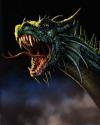| Online: | |
| Visits: | |
| Stories: |

| Story Views | |
| Now: | |
| Last Hour: | |
| Last 24 Hours: | |
| Total: | |
Near-Death Experiences Of The Blind; How Does That Work?

Mysterious Universe
Near-Death-Experiences, depending on which researcher you listen to, are nearly universal across the globe. People in every country, from every culture, with every belief system and background report having these highly profound and life-altering experiences. The landscapes and images they see, the people that greet them, the sensations they feel, in almost every case they are the same (or nearly the same). In that way, Near-Death-Experience iconography is archetypical among almost everyone who experiences it.
Where does that iconography come from though? First, let’s define that iconography.
In 1504, Netherlandish painter Hieronymus Bosch (born Jheronimus van Aken), finished the second panel in his series of paintings titled Visions of the Hereafter. The series consists of four oil-on-panel paintings – Terrestrial Paradise, Ascent of the Blessed, Fall of the Damned, and Hell. That second panel, Ascent of the Blessed, which remains one of Bosch’s most recognised works, depicts the journey of the saved into Heaven. The painting offers typical Christian iconography, such as angels, departed souls, and a tunnel of light apparently leading to paradise.
Most art historians are of the opinion that this series is a simple, albeit beautiful, homage to traditional Christian values, as is common among Netherlandish paintings, but some historians make the claim that Ascent of the Blessed is the earliest known depiction of a Near-Death-Experience.[1] The use of the tunnel of light, and the ascent of the departed souls accompanied by angels, is in fact the very same iconography that is almost universally reported by NDE’ers. Often the angelic characters are replaced by deities or spiritual characters from another belief system, or they’re just seen as the souls of other people, but the overall scene is usually the same.
Reposted with permission




